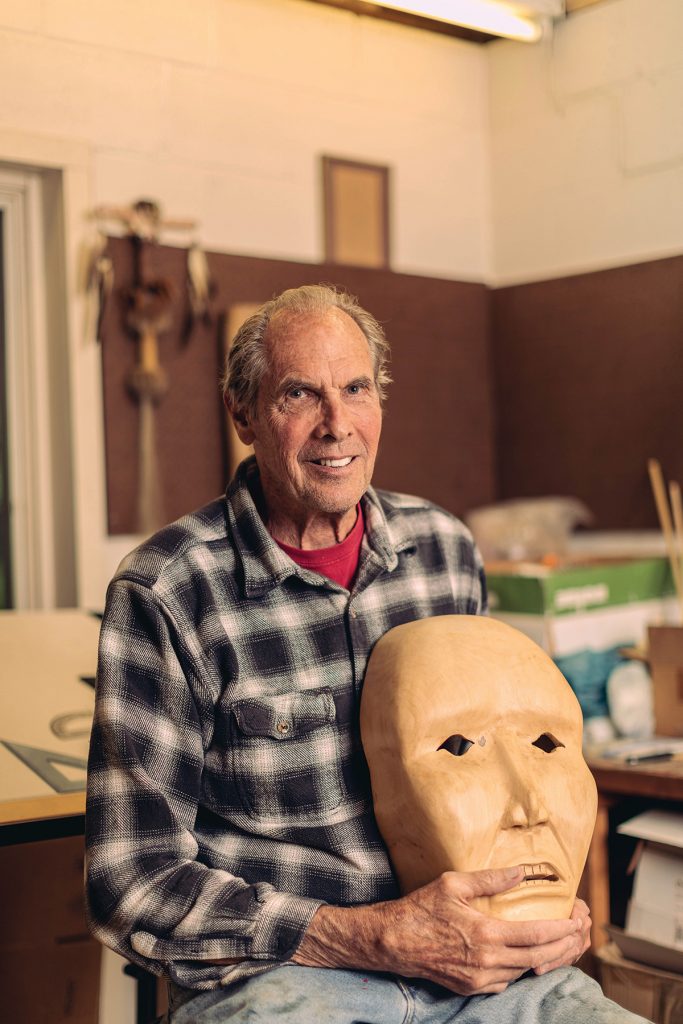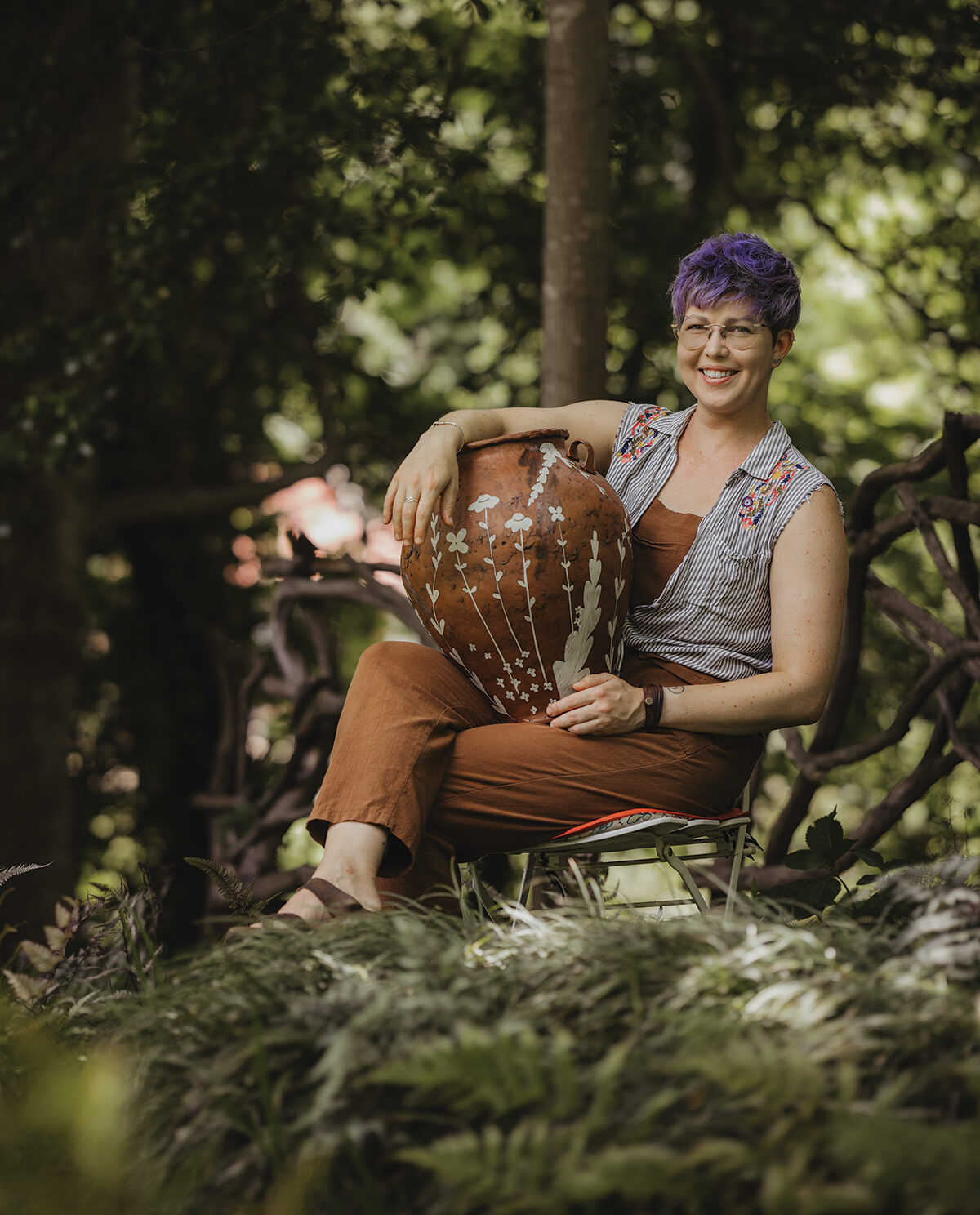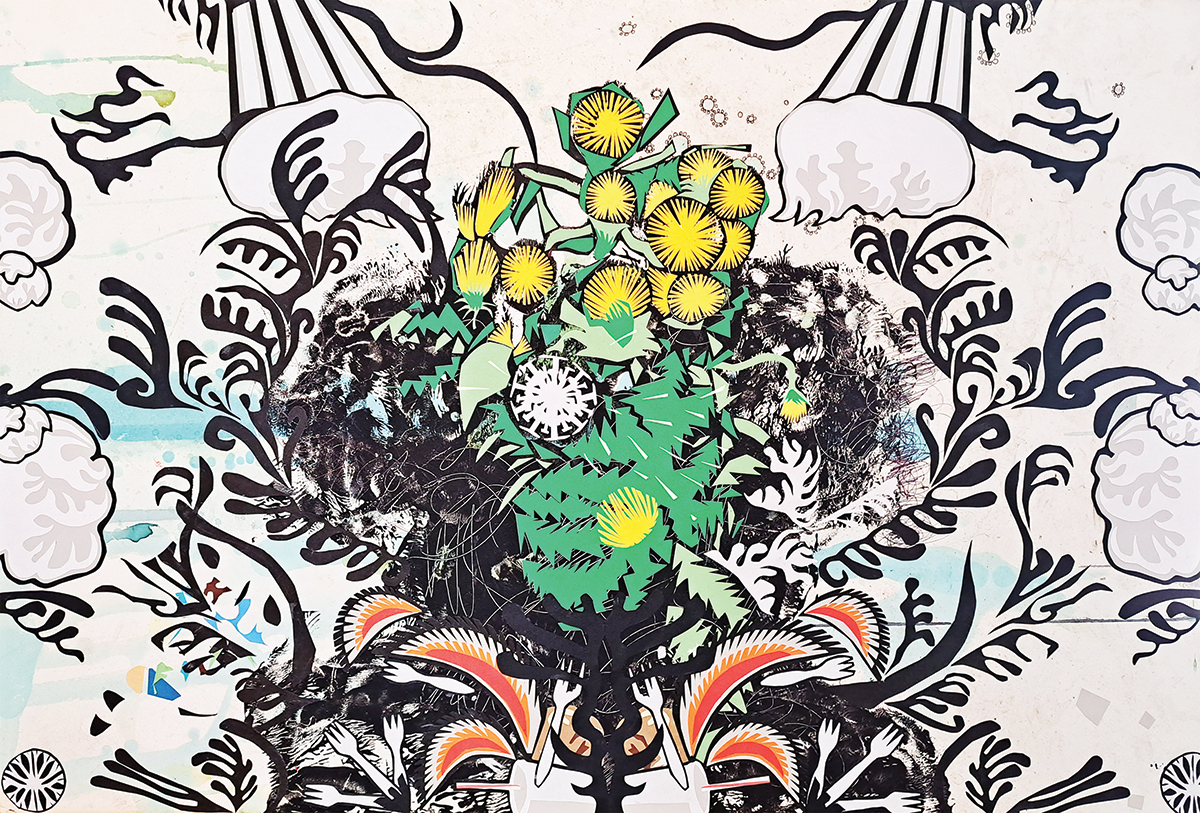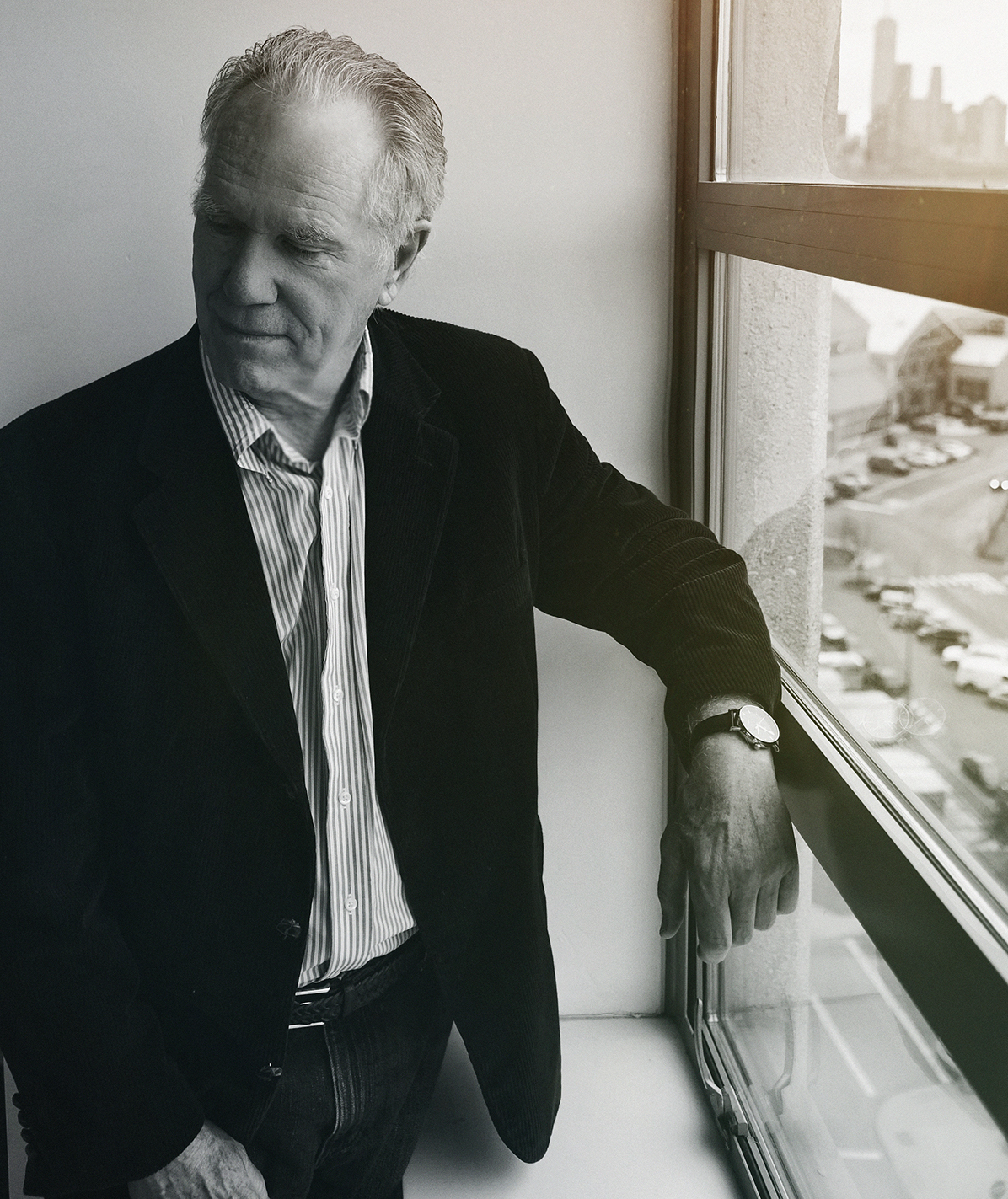Woodcarving class evokes the spirit of original masks
By Jarrett Van Meter

Karl Schwartz shows how to make heirloom masks that transcend time, place, and pandemic.
Photo by Jack Robert
The key is symmetry. Unlike a human face, says woodcarver Karl Schwartz, a good mask requires a meticulous sameness on both sides of the meridian.
“If you put a mirror up against your face, your left side does not look like your right side,” he says. “There are subtle differences. But when you make [a] mask, if one eye is bigger than the other or taller than the other, one is off-centered a little more than the other, it pops right out at you. It kind of ruins the mask — unless you’re making a funny-faced mask.”
This month, Schwartz will hold his mask-making workshop at Tryon Arts and Crafts School — the second edition in six months. The encore course is a result of the popularity of his initial offering in December. In five non-consecutive days, students learn how to break down the geometry of a face and how to operate the necessary woodworking equipment, studying Schwartz’s personal mask collection for inspiration and then executing their own project.

Photo by Jack Robert
“A guy told me once, there’s more trick than trade to accomplish things,” Schwartz says, referring to his own teaching style. “When you’ve been doing something for a while, you learn tricks. Professionally, they would call them techniques. Working with other people that have skills, you learn them and then you pass them on.”
And Schwartz has plenty of skills. He grew up in Connecticut, the son of a carpenter who specialized in making outhouses. The early exposure resulted in lasting love and expertise, and even after he studied engineering and became a computer programmer, he recalls returning home after work each night to carve, whittle, and saw until it was time for bed. While the foundation was set early, it wasn’t until he was thirty, on a trip to visit his sister at her home in Washington State, that he became enamored with masks.

Carved faces can be highly personalized, including the use of playful elements and ritual symbols.
Photo by Jack Robert
“A lot of my sister’s friends had masks or half-masks that were mounted on the wall, and they could tell the story behind it, and that was probably most important,” he says. “[These weren’t] pieces from Pier 1. These were all one-off pieces that someone made special for a special occasion.”
He was particularly struck by the traditions of Haida and Inuit art, whose practitioners “[will] make a mask for the ocean, a mask for the tree, the tree spirit. … How do you take that tree spirit and give it physical form so that you can recognize it? … It comes a lot from an almost religious practice called animism, where you respect the spirit of the mountain, the spirit of the trees, the spirit of the ocean.

Photo by Jack Robert
“They’re all connected, so you give them some physical form so that you can recognize them, and there are dances and ceremonies that go with that.”
Schwartz moved to the area seven years ago (his wife is a Tryon native) and has found his new home particularly conducive to the art form, both in terms of creativity and access to preferred materials.
“I’ve gotten the chance to work with curly maple, birdseye maple — you don’t have these things in Florida, big pieces,” he explains.
Schwartz acknowledges that the recent emergence of mask culture has imbued his craft with new context. Up until 15 months ago, the mention of a modern “mask” evoked images of a Halloween costume or a skin treatment. Now thoughts immediately jump to the ubiquitous face coverings meant to restrain a deadly virus.
“It certainly has changed,” says Schwartz.

Photo by Jack Robert
The day-long spacing between the course’s five meetings was Schwartz’s idea; he hopes the breaks will allow students to get perspective on their work.
“They can take the piece home, maybe even take a picture of it, look at it from different angles and mark on it with a pencil where [they] want to take material off or center something,” he says. “If you’re going to put tattoos on it, like Queequeg in Moby Dick, mark on the mask. You’ve got a day to look at it, then when you come back the next day, we are going to talk about it — and start carving.”
“Making Faces,” a five-day workshop with Karl Schwartz, happens 12-4pm on June 7, 9, 11, 14, and 16 at Tryon Arts and Crafts School (373 Harmon Field Road, Tryon). Cost is $160/members, $175/nonmembers, plus a $15 materials fee. For more information or to register, call 828-859-8323 or see tryonartsandcrafts.org.



